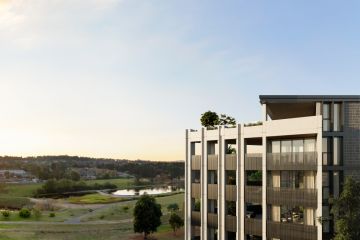Market View: Is there really a housing bubble crisis in Melbourne?
My friends keep talking about a “housing bubble”: please explain what that means so I can join in the conversation without sounding like a fool.
The current hot topic is whether Melbourne is in the middle of a housing bubble on the brink of popping. If you believe some pundits, the imminent price correction could make history. First time buyers are waiting for the bubble to burst to get a foot on the housing ladder. Downsizers feel they are being urged to sell before the bubble bursts. Investors are nervous their retirement plan will crumble if the bubble exists. Buyers who are looking to upsize want to play the market, aiming to sell in the boom and buy in the bust. No matter what buyer or seller category you fall under the potential ramifications of a housing bubble will have implications on us all. Gone are the days of market talk that is focused on a boom, the attention now surrounds the heavy speculation of a bubble.
A bubble simply means an over inflation of price. In the housing market a bubble can form from an extended period of exaggerated house price growth. Like any bubble, it’s not if but when the bubble will burst. Nothing lasts forever, right? If a bubble exists and pops, house prices fall back to a more sustainable level, that is equal or lower than the price point at which the exponential growth first began.
For a bubble to form it requires fuel to spark an extraordinary period of growth, normally something unforeseen within the market. Sometimes it is difficult to even pinpoint if a bubble truly exists or is even being created until prices start to correct. Pundits, myself included, like to speculate when unusual events are coupled with strong house price growth.
Currently the finger points to Melbourne and more forcefully Sydney. Buyer activity has been ignited following an extended period of historically low interest rates. It is the influence of monetary policy that has encouraged consumers to purchase dwellings either as an investment or as owner-occupiers. This increase in demand has resulted in prices growing well above average.
Tighter lending conditions have been in place to help contain any potential risks within the housing market. Despite this, investor activity still poses a significant risk as prices continue to rise suggesting a possible bubble. A price correction could ensue if activity is dampened by an aggressive rise to rates. If a heavy price correction follows it will prove a bubble did exist.
In reality small towns are more susceptible to housing bubbles, in particular towns that find themselves being driven by an unexpected market driver. A prime example, mining towns that experienced a boom and subsequent bubble pop once the mining phase passed. Melbourne’s housing market is driven by a variety of factors that make the chance of market collapse less risky.
We recommend
States
Capital Cities
Capital Cities - Rentals
Popular Areas
Allhomes
More







